
Chrysotoxum cautum is a species of hoverfly. It is found in southern Britain and Europe East into the Palearctic but is normally encountered in small numbers. The larvae are thought to feed on root aphids. Adults are usually found on the edges of woodland or scrub or along hedgerows where they visit a wide range of flowers.
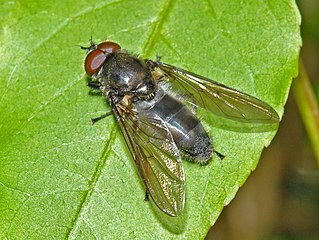
Cheilosia variabilis, common name figwort cheilosia, is a species of hoverfly belonging to the family Syrphidae.
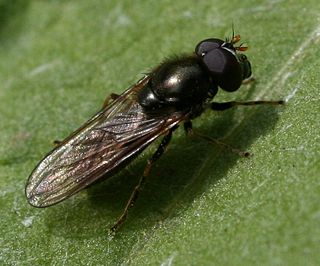
Cheilosia pagana is a Holarctic species of hoverfly. Like most Cheilosia it is black, and because of this may often be overlooked as a hoverfly. One identifying feature is a large red to orange 3rd antennal segment.

Cheilosia grossa is a widespread European species of hoverfly. Adults can be found in spring on sallow catkins and the larvae tunnel in the stems of various thistle species.

Cheilosia bergenstammi is a widespread European species of hoverfly. Adults can be found in summer visiting ragwort flowers and this plant is also the larval hostplant.

Cheilosia latifrons is a species of 'flower flies' or hoverflies belonging to the family Syrphidae subfamily Eristalinae.

Pipizella viduata is a species of Hoverfly, from the family Syrphidae, in the order Diptera.

Cheilosia nebulosa is a Palearctic species of hoverfly.

Cheilosia impressa is a Palearctic species of hoverfly. Like most members of its genus C. impressa is a rather small, dark insect and identification can be problematic.
Chrysotoxum fasciatum is a species of Holarctic hoverfly.

Cheilosia antiqua is a European species of hoverfly.
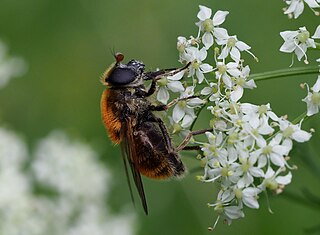
Cheilosia chrysocoma is a European species of hoverfly.

Cheilosia psilophthalma is a Palearctic hoverfly closely related and very similar to Cheilosia latigenis, Cheilosia mutabilis and Cheilosia urbana . It is a rare and little known species recorded from Scandinavia, Ireland, Britain, France, Poland, Switzerland, Greece, Montenegro, Serbia, Ukraine and European Russia. Flowers visited include Acer platanoides, Anemone nemorosa, Primula veris, Prunus spinosa and Salix spp. Cheilosia psilophthalma flies in April and May. Open, grassy areas within sparse woodland and unimproved, montane subalpine grassland are preferred habitats. Larvae are recorded as developing in Hieracium pilosella and Hieracium caespitosum.
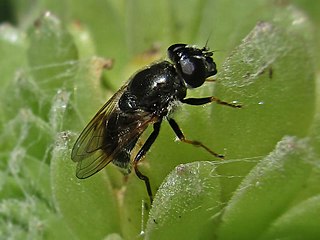
Cheilosia caerulescens is a Palearctic hoverfly.
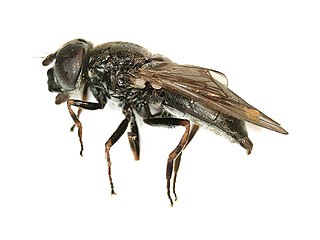
Cheilosia cynocephala is a Palearctic species of hoverfly.
Cheilosia griseiventris is a Palearctic hoverfly. It is not considered as distinct from Cheilosia latifrons by most European workers. It is variously treated in other and older works.
Cheilosia nigripes is a Palearctic hoverfly.

Cheilosia praecox is a Palearctic hoverfly. Speight et al. (1998) indicate that the correct name for this species is C.urbana (Meigen)
Cheilosia sahlbergi is a Palearctic hoverfly.

Cheilosia vulpina is a Palearctic hoverfly.
















